
Understanding grouper species
Dive deep into the fascinating world of grouper species
Groupers are a diverse group of fish belonging to the family Epinephelidae, known for their impressive size and strength. Among them, the giant grouper (Epinephelus lanceolatus) and goliath grouper (Epinephelus itajara) stand out as the most iconic species. Divers and anglers alike marvel at these underwater behemoths that inhabit coral reefs and rocky outcrops. The giant grouper can be found across the Indo-Pacific region, including Australia, Japan, and the Red Sea, whereas the goliath grouper predominantly inhabits the warm waters of the Atlantic Ocean, including the Gulf of Mexico, Caribbean, and coastal waters from Florida to Brazil. Catching these massive creatures is a thrilling yet challenging experience. For instance, the largest grouper ever caught was a goliath grouper, reeling in a staggering 680-pound fish off the coast of Fernandina Beach, Florida, back in 1961. This record-breaking catch solidified the significance of groupers in sport fishing history and continues to inspire avid anglers today. Interestingly, groupers play a vital role in maintaining the balance of marine ecosystems. They act as apex predators, regulating the populations of other fish and crustaceans on reefs. Without these giant fish, the health of coral reefs would be severely impacted. Discover more about record-breaking catches and the sheer thrill of landing one of these underwater giants here.The record-breaking catch
The record-breaking catch and its story
you wouldn't believe the buzz that surrounded the legendary catch of the largest grouper ever caught. On May 20, 1961, a massive goliath grouper was hauled in by Lynn Joyner off the coast of Fernandina Beach, Florida. This catch still holds the International Game Fish Association (IGFA) all-tackle world record for largest grouper species ever caught. We're talking about a giant weighing an astonishing 680 pounds!
Lynn Joyner's historic catch took place during a sport fishing tournament, which added extra layers of excitement to an already jaw-dropping event. This colossal fish, scientifically known as Epinephelus lanceolatus, left everyone speechless. It's moments like these that fisherfolk live for—the thrill of setting a world record.
The role of equipment and expertise
Pulling in a fish of that size requires not just brute strength but also expert knowledge and top-notch gear. Joyner, an experienced angler, used the finest saltwater fishing tackle of the era. While the tackle has undoubtedly advanced over the years, the principles remain the same—strong lines, durable rods, and reliable reels.
According to Steve Haeusler, a seasoned fisherman and marine biologist, “To catch a goliath grouper weighing hundreds of pounds, you need to invest in equipment that can handle the extraordinary force and weight of these magnificent creatures.”
The official IGFA record confirmation
After landing the monstrous fish, the next step was getting it certified by the IGFA, the world's leading authority on fishing records. The IGFA sets strict criteria for what constitutes a valid catch, scrutinizing everything from the type of equipment used to the weighing process for accuracy. Joyner's catch passed all the tests with flying colors, etching his name and the goliath grouper into the record books forever.
Comparison with other giant catches
Although Joyner's 680-pound goliath grouper holds the official record, there have been other notable large catches. For instance, in the same waters of the Gulf of Mexico, goliath groupers regularly weigh in at impressive sizes, often tipping the scales at over 400 pounds. On the other side of the world, in Japan, the giant grouper (Epinephelus lanceolatus) has also made headlines for its enormous size.
Even with these incredible feats, Joyner's catch remains unbeaten, highlighting just how extraordinary his achievement was. If you're interested in other record-breaking aquatic feats, check out the biggest fish ever caught not shark for more mind-blowing catches.
Location and conditions
Fernandina Beach lies in a prime location for catching these spectacular groupers. Situated along the Atlantic coast, it features an abundance of reefs and wrecks that serve as ideal habitats for the goliath grouper. The warm, nutrient-rich waters of this region, coupled with the right seasons, create the perfect conditions for attracting massive fish.
Anglers like Joyner and many others who fish Florida's waters—including places like the Gulf of Mexico and the Caribbean—benefit from these fertile fishing grounds. There's something magical about these locations that keeps drawing in both fish and fishing enthusiasts from around the globe.
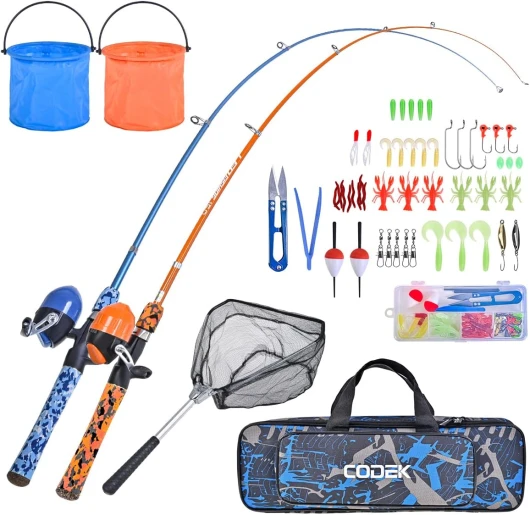
- + Complete starter kit including fishing pole, reel, net, and buckets
- + Portable and telescopic design
- + Great for beginners, suitable for boys and girls
- + Attractive colors (Blue + Orange)
- + Encourages outdoor activity
Fishing techniques for groupers
Getting the gear and bait right
When you're trying to catch a giant grouper, having the right equipment is half the battle. These fish are no joke. Take the goliath grouper, for example, known scientifically as Epinephelus itajara. They're called giants for a reason—these fish can weigh over 800 pounds! Using proper grouper fishing equipment is essential if you want any chance of success.
First off, your fishing rod and reel setup matters. Heavy-duty rods and reels designed for saltwater fishing are a must. According to Steve Haeusler, a pro angler from Fernandina Beach, Florida, "You've got to go big or go home when it comes to goliath groupers. I always use a conventional reel with at least 50-pound test line." This is a guy who caught a 680-pound goliath grouper, so he knows what he's talking about.
Once you've got your gear squared away, it's time to think about bait. Groupers aren't too picky; they'll go after a variety of live and cut bait. Common choices include mullet, ladyfish, and other smaller fish species that are native to the area you're fishing. "Live baits are often the go-to for these predatory fish," says Lynn Joyner, another seasoned angler from the Gulf of Mexico region.
Using the right techniques
Now, onto technique. When targeting giant groupers, bottom fishing is the most effective approach. These fish love to hang out by reefs, wrecks, and other underwater structures, making these spots your prime fishing locations. Dropping your bait to the ocean floor and waiting for that heavy pull might seem simple, but it takes patience and skill.
Keep in mind, grouper species like the goliath are known for their strong, sudden hits. Many anglers recommend setting the hook hard to make sure it’s secure. Once hooked, it's a tug-of-war affair. According to the International Game Fish Association (IGFA), who keeps tabs on record-breaking fish, keeping your rod steady and maintaining pressure during the fight can make the difference between a successful catch and a lost fish.
Proper fish handling is crucial too. Large groupers are often protected by wildlife conservation regulations, especially the goliath grouper and the warsaw grouper. In Florida, the Florida Fish and Wildlife Conservation Commission (FWC) has strict guidelines on how to handle and release these fish to ensure they're returned to the water with the least stress possible.
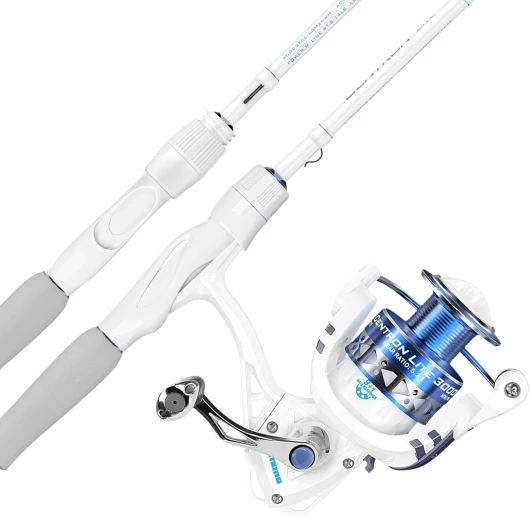
- + IM6 Graphite construction for lightweight performance
- + Stainless Steel Guides with ceramic rings for smooth casting
- + Contoured EVA Handles for comfortable grip
- + Available in Split or Full Rear Handle Design
- + Multiple models available, including 6'6" Medium and 2000 Reel
The role of IGFA in record verification
How IGFA verifies world records
The International Game Fish Association (IGFA) has been the gold standard in record verification for decades. When it comes to identifying and confirming the largest grouper ever caught, their stringent guidelines ensure that no stone is left unturned.
Submission process
Anglers who believe they've set a record must submit an application to the IGFA. This includes detailed information about the catch, such as the species, weight, date, location, and gear used. Crucially, a certified scale must be used to weigh the fish. The IGFA's emphasis on precision ensures that all records reflect accurate and comparable data.
Expert review and validation
Once an application is submitted, it undergoes a thorough review. Experts like Steve Haeusler, who has been involved in the verification process for years, meticulously examine every detail. According to Haeusler, "We look at the entire context of the catch – from the type of tackle used to the condition of the fish when it was weighed." This rigorous examination guarantees the integrity of each record.
Case of the largest goliath grouper
Take, for instance, the gigantic goliath grouper caught off the coast of Fernandina Beach, Florida. The catch, weighing a staggering 680 pounds, was meticulously documented and verified by the IGFA. This monumental catch made headlines and exemplified the importance of proper procedure and documentation in record-setting fishing.
The crucial role of photographic evidence
Photographic evidence is another cornerstone of IGFA's verification process. Anglers must provide clear, unaltered images of the fish, showcasing its size and unique markings. "In this digital age where photo manipulation is rampant, our team analyzes each image to ensure authenticity," notes Lynn Joyner, another IGFA expert.
Age and size documentation
Additionally, the IGFA requires information about the fish's age and size, often determined through scientific methods such as otolith (ear bone) analysis. For species like the Atlantic goliath grouper, understanding the age can provide vital data on growth rates and longevity, enriching the overall knowledge about these giants of the sea.
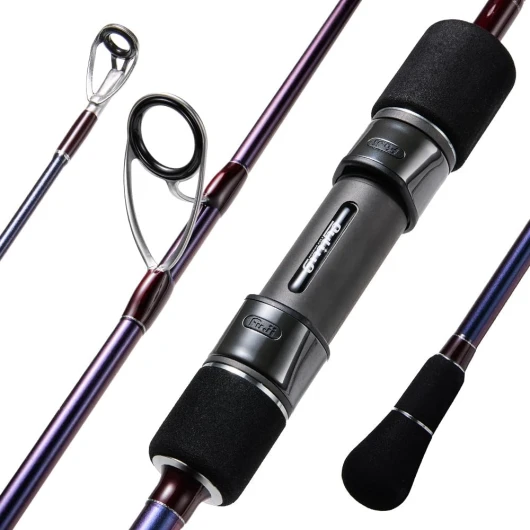
- + Lightweight design for easy handling
- + Durable Toray Carbon Fiber construction
- + Fuji Guides for smooth line passage
- + Compatible with spinning/casting reels
- + Split Rear High EVA Handle for comfort
Conservation efforts for grouper species
Why conservation matters for the future of groupers
Conservation efforts for grouper species are not just a necessity but a responsibility. These massive fish, including the giant goliath grouper (Epinephelus itajara) and the giant grouper (Epinephelus lanceolatus), face threats from overfishing, habitat loss, and illegal fishing practices.
The Florida Fish and Wildlife Conservation Commission (FWC) plays a pivotal role in conserving grouper populations, especially in areas like the Atlantic Ocean, the Gulf of Mexico, and the Caribbean. According to the FWC, the Atlantic goliath grouper was made a protected species in 1990 due to severe population declines. Today, catch and release methods are encouraged to keep these populations from dwindling.
Impact of overfishing and habitat destruction
Overfishing and habitat destruction are the two primary adversaries of grouper conservation. Researchers have found that grouper species, such as the Warsaw grouper, suffer significantly from commercial fishing practices. These fish often inhabit coral reefs, which are themselves under threat from climate change and human activities, exacerbating the problem.
According to a study published in the Marine Ecology Progress Series, over 37% of grouper populations face a high risk of extinction if current practices continue unchecked.
Innovative measures and proper fish handling
To counteract these damaging effects, various measures have been implemented. One notable approach is the establishment of Marine Protected Areas (MPAs) where fishing is restricted. These zones have been successful in helping endangered species recuperate. For recreational fishers, it's crucial to adopt proper fish handling techniques. Handling groupers with wet hands, using non-stainless steel hooks, and ensuring the fish are quickly released alive and unharmed are some practices that can make a big difference.
Expert fisherman Lynn Joyner advises, "Always use dehooking devices to remove hooks, and if you must lift a grouper for a photo, support its weight to avoid internal injuries."
Community and educational efforts
Beyond law enforcement and regulations, community awareness plays a crucial role in grouper conservation. Educational campaigns led by NGOs and environmental groups focus on teaching local communities and recreational fishers about sustainable practices. For example, the annual "Grouper Moon" projects in the Caribbean aim to protect spawning aggregations by involving local fishers in monitoring and protection efforts.
With the right combination of regulation, community involvement, and proper practices, there is hope for the future of grouper fishing. Considering how these giants of the ocean have captivated us, it's a cause worth fighting for.
The importance of proper fish handling
Tips for handling grouper without causing harm
Handling a giant grouper like the largest grouper ever caught requires a lot more care than just pulling them out of the water. Mismanaging these massive creatures can easily lead to injuries or even death, which defeats the goal of sport fishing – thrill and sustainability.
Specialists recommend using a zero-damage approach when dealing with groupers. Lynn Joyner, a seasoned angler, shares that it’s crucial to handle the fish as little as possible, keeping it in the water if you can. “Use a hook remover tool to minimize injury,” she advises.
Proper fish handling techniques
Dr. Steve Haeusler from the Florida Fish and Wildlife Conservation Commission emphasizes using wet hands or a wet towel to avoid stripping the fish of its protective slime coat. A research report by the FWC mentions that the slime coat of groupers is crucial for their immune defense and protection against parasites. Handling a grouper with dry hands can lead to infections and other health issues for the fish.
Investing in proper fish handling gear can make a significant difference. Tools like fish grippers and landing nets designed specifically for giant groupers can prove invaluable. The longer the fish stays in the water, the higher the chance it will swim away unharmed.
Healthy release practices
Sustainability is a growing concern in sport fishing circles, and proper release practices go a long way in conserving grouper populations. Always try to release the fish while it’s still in the water to lessen physical stress. Florida regulations also encourage anglers to educate themselves on the latest fish handling techniques and conservation laws.
If you must take the fish out for a brief moment to unhook or photograph, support the fish with both hands under its belly and avoid hanging it vertically which can cause internal injuries. Each second out of the water spikes the fish’s stress levels, so be quick yet gentle.
Bio effects and handling impacts
The impact of improper handling on the biology of groupers is documented well in studies present in the Gulf of Mexico and the Atlantic Ocean. A comprehensive study in Japan also found that improper handling leads to a higher mortality rate among groupers, which stresses the importance of adopting best practices universally.
Case studies of notable grouper catches
Giant goliath grouper hauled by Steve Haeusler
Steve Haeusler once set the fishing community abuzz with his monstrous catch off Fernandina Beach, Florida. The highlight of this historic fish story was the whopping 680-pound giant goliath grouper (Epinephelus itajara) he hauled. This epic catch remains one of the largest groupers ever caught on record.Lynn joyner's legendary warsaw grouper
Lynn Joyner's jaw-dropping capture of a 436-pound warsaw grouper (Epinephelus nigritus) in the deep waters off Fernandina Beach is another monumental moment in grouper fishing history. This catch stands out not only for its size but also for the sheer challenge it posed, highlighting the strength and perseverance needed in sport fishing.Southeast florida's goliath grouper battles
The waters of Southeast Florida, especially the Ten Thousand Islands area, have seen their fair share of record-breaking grouper catches. The Gulf of Mexico and the Atlantic Ocean’s warm, tropical waters provide ideal habitats for these giants. Anglers here, utilizing advanced tackle and technique, have brought in several goliath groupers over 400 pounds. These colossal fish exemplify why Florida remains a hotspot for fishing enthusiasts.The igfa's role in verifying records
The International Game Fish Association (IGFA) plays a crucial role in maintaining the authenticity and recognition of such astounding catches. Each record submission is rigorously verified, ensuring the integrity of sport fishing records. The IGFA's stringent guidelines help keep stories like those of Steve Haeusler and Lynn Joyner credible and celebrated globally.Ethical fishing and conservation
Though these record-breaking catches are awe-inspiring, they also spotlight the importance of conservation. Organizations like the Florida Fish and Wildlife Conservation Commission (FWC) emphasize the significance of sustainable fishing practices. Proper fish handling, catch and release techniques, and regulatory measures ensure that these magnificent species thrive for years to come.The future of grouper fishing
A look at sustainable fishing practices
With the growing popularity of sport fishing, including catching some of the largest groupers ever caught, it's vital that we address sustainable fishing practices. Overfishing can lead to the depletion of grouper populations, negatively impacting marine ecosystems, and the livelihood of communities relying on fishing. Ensuring a future for grouper fishing means adopting and promoting sustainable and responsible fishing methods.
Implementing catch-and-release
One effective method of promoting sustainability is catch-and-release. This practice allows anglers to enjoy the thrill of catching large groupers while ensuring the fish are released back into the water, minimizing the impact on their populations. Using proper fish handling techniques—including using circle hooks, wetting hands before handling, and minimizing air exposure—can increase the survival rate of released fish.
Establishing protected marine areas
Protected marine areas are crucial for safeguarding critical habitats and allowing fish populations to recover and thrive. In the Gulf of Mexico, for example, certain areas are off-limits to grouper fishing during spawning seasons, helping maintain healthy breeding populations. Marine reserves in places like Southwest Florida's Ten Thousand Islands further allow ecosystems to function and reproduce without human interference.
Promoting responsible fishing regulations
The Florida Fish and Wildlife Conservation Commission (FWC), along with international bodies like the IGFA, plays a crucial role in monitoring and regulating fishing activities. These organizations establish fishing quotas, minimum size limits, and seasonal closures to maintain a sustainable balance.
Tracking and research
Scientific research and tracking programs are essential for understanding grouper behavior, population dynamics, and migration patterns. By tagging and monitoring groupers, researchers can gather valuable data to inform conservation strategies. Initiatives like those led by Dr. Steve Haeusler in Florida, focus on satellite tagging of Goliath groupers to track their movements and health over time.
Community involvement and education
Local communities play an essential role in promoting sustainable fishing practices. Educational programs and campaigns can raise awareness about the importance of conservation. Programs to involve fishers in citizen science projects, such as reporting their catches and practicing ethical fishing methods, can build a communal effort toward sustainability.
Looking forward
The future of grouper fishing depends on how well we integrate these sustainable practices. While catching a record-breaking giant grouper is a thrilling achievement, it's equally important to create a lasting legacy that preserves and protects these magnificent fish for future generations to enjoy. Strong regulations, community support, and ongoing research are the pillars of a sustainable future for grouper fishing.

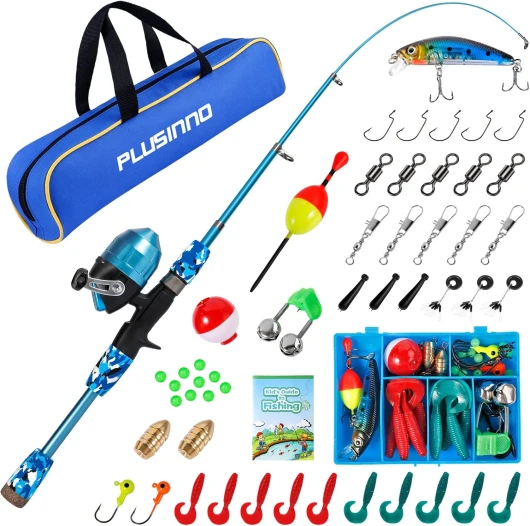
-large-full.webp)


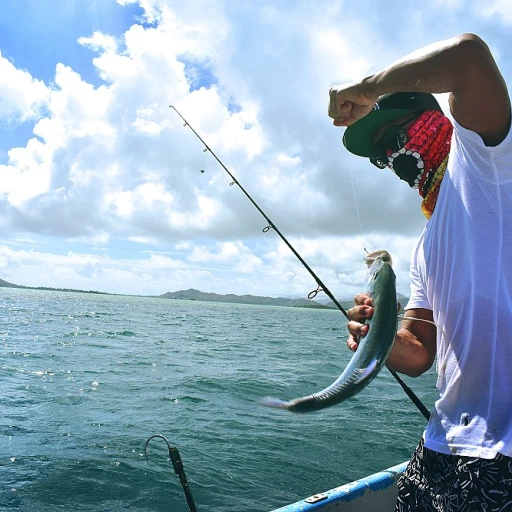
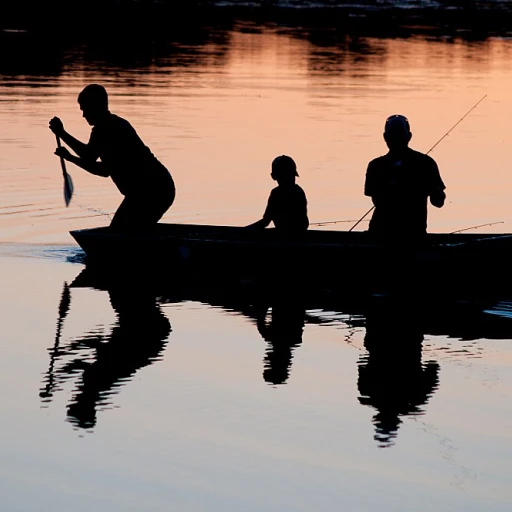
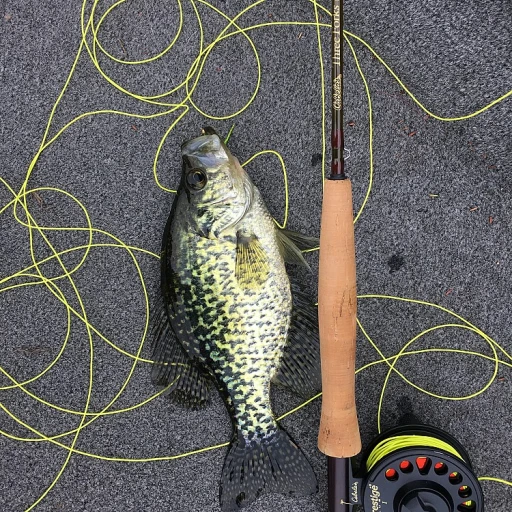

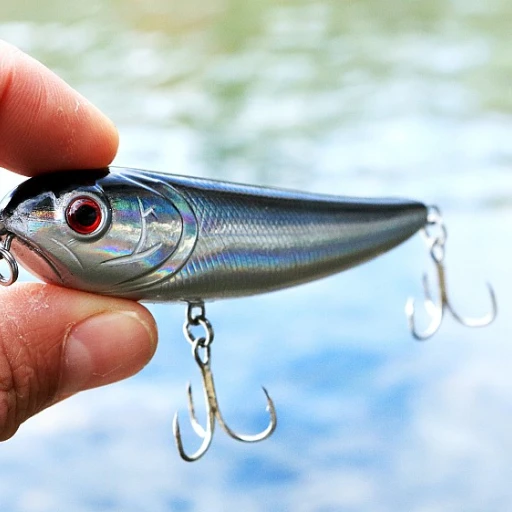
-large-teaser.webp)
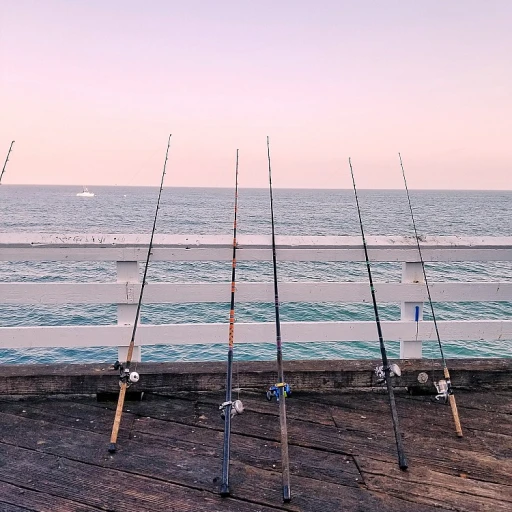
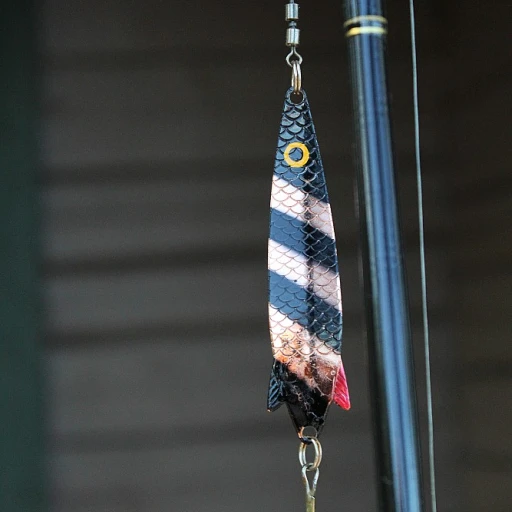

-large-teaser.webp)